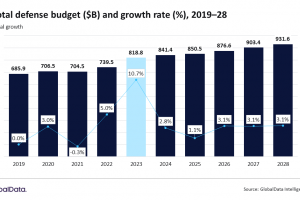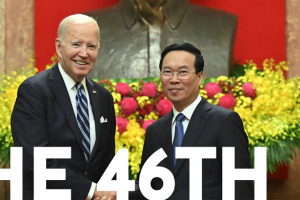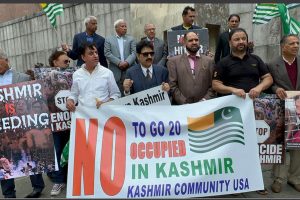The question of how one man amassed such a stockpile of guns arises just as there is renewed American soul-searching over the widespread availability of firearms in the wake of a series of mass shootings.
By Peter Eisler, (Reuters)
Even in a country where more people own more guns than anywhere else in the world, Nicholson’s cache is extraordinary. The U.S. Bureau of Alcohol, Tobacco, Firearms and Explosives doesn’t rank gun seizures by size, but a spokesman says Nicholson’s hoard probably is among the largest ever.
When sheriff’s investigators entered Brent Nicholson’s front yard, there was no hint of the sinister stockpile hidden behind his windowless front door.
But inside, the guns were everywhere: rifles and shotguns piled in the living room, halls and bedrooms; handguns littering tables and countertops. Outside, when they rolled up the door on the pre-fab metal garage, more arms spilled out at their feet.
“This has completely changed our definition of an ass-load of guns,” said Chesterfield County Sheriff Jay Brooks. Six weeks after the discovery, officers are still cataloging the weapons, many of which have proved stolen, and the final tally is expected to be close to 5,000. “I don’t know if there’s ever been (a seizure) this big anywhere before,” Brooks says.
The question of how one man amassed such a stockpile of guns arises just as there is renewed American soul-searching over the widespread availability of firearms in the wake of a series of mass shootings.
Yet when and why Nicholson set out to amass such an arsenal remains a mystery. Investigators are trying to determine whether he was simply a gun-obsessed hoarder or a supply valve in the “Iron Pipeline” of illegal firearms flowing from the south to New Jersey, New York and other northern states.
Nicholson, jailed on multiple charges of possessing stolen property, has not entered a plea or retained an attorney, court records show. His wife, Sharon Nicholson, facing similar charges and free on bond, declined to discuss specifics of the case but stressed in a brief interview that her husband buys his guns legally.
The Nicholson case raises issues that are fueling an increasingly heated national dialogue on the modern-day implications of Americans’ constitutional right to bear arms, which puts no limits on the number of weapons citizens can own. The uncertainty over how he got his guns – and what he was doing with them – underscores disputes over private gun sales, gun registration and what the government should know about who owns firearms and how they change hands.
Now, the spate of mass shootings, capped by Wednesday’s spree by a heavily armed couple who killed 14 at an office holiday party in San Bernardino, California, has pushed those issues to the fore in the presidential campaign. The massacre, which follows an attack that killed three last Friday at a Colorado Planned Parenthood clinic and an Oct. 1 rampage by a gunman who killed 10 at an Oregon college, prompted Hillary Clinton, leading candidate for the Democratic nomination, to renew her call to “stop gun violence now” with new firearm purchase restrictions. Conversely, those who top the polls for the Republican nomination, Donald Trump and Ben Carson, insist the answer to gun violence is to empower citizens to thwart such attacks by making it easier, not harder, to buy and carry weapons.
It wasn’t hard for Nicholson.
Just about everyone knows the Nicholsons in this struggling town of 2,700, where the textile industry’s regional decline has helped strand median household income at $26,500 a year, half the U.S. average, and burglary rates run well over national norms. Firearms are a cultural staple – hunting clubs and cabins dot the county – and people say Nicholson’s penchant for guns was a family affair.
“Everybody knew he’d buy guns; his father bought ‘em, his grandfather bought ‘em,” says Al Padgett, 68, who keeps a booth at a local flea market and says he’s known the family all his life. “He collected ‘em, hoarded ‘em, but I never knew him to sell a gun. Not one. He did everyone a favor keeping ‘em off the street.”
Brooks sees things differently. Nicholson had piles of allegedly stolen goods, including a zoo’s worth of taxidermy trophies, Brooks says, but his preference was guns and he provided a ready market for burglars who grabbed them from cabins and hunting camps. The sheriff still hasn’t determined precisely how many guns in Nicholson’s cache were stolen, noting that hundreds have had their serial numbers removed so they can’t be traced.
“Getting him locked up dries up the outlet for this stolen merchandise,” Brooks says.
Brooks suspects Nicholson may have been selling some of the guns. He had relatively few handguns – maybe a half-dozen large buckets full – and “that makes us believe he had a market for those and was moving them north,” Brooks says, noting that the matter remains under investigation.
South Carolina is a common starting point for firearms moving up the Iron Pipeline, a route for many of the 230,000 or so guns stolen nationwide each year. The South has more gun thefts than any other region, federal data show, and police in New York and other northern cities say they regularly tie those guns to crimes, though there is no data on how often.
Stemming the flow is a challenge, law enforcement officials say, because it’s not organized groups moving truckloads of weapons; it’s a loose web of individuals who sell guns more as an occasional sideline than a full-time endeavor.
(Editing by Jason Szep and Martin Howell)
Read the original article on Reuters.




